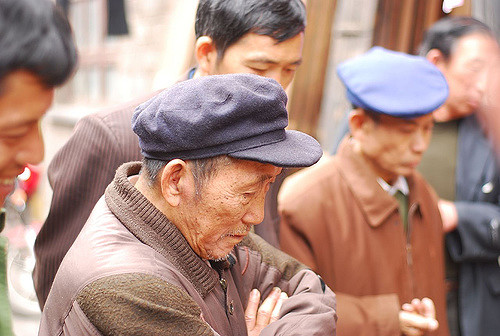
Vera & Jean-Christophe
Recently, IMF published a working paper called “Inequality in China – Trends, Drivers and Policy Remedies”. After a 2011-2017 wave of scientific works devoted to the unusual Chinese mix of very high GDP growth, the fastest in the history of mankind's poverty reduction and the highest property and income stratification, the fund summarized its approaches to the problem. The situation in China, in fact, calls into question the validity of one of the main theses of the IMF and the World Bank that inequality is an obstacle to economic growth. China is an obvious exception, but on a scale that calls into question the rule itself.
Levels of inequality in the PRC have been growing since the 1980s; especially rapid growth was observed in 1985-2003, when assessments of the Gini coefficient for the PRC were about 0.49 (probably the highest level in the world). At the same time, the country was the largest "reservoir of poverty" in the world. Things changed further: inequality began to decline slowly, but the fight against poverty produced unexpectedly high results without changing the levels of inequality. At that time, the Chinese authorities created a relatively broad pension system (now 74% of people who reached the retirement age receive pensions in the PRC), a new cooperative health system in rural areas, paid more attention to financial inclusion of the poorest population, supported farming, and actively used interregional tax redistribution. All these measures were mainly aimed at combating poverty, but not inequality, including the Dibao guaranteed income system for some of the poorest rural population and ensuring equal access to secondary education for children of intra-Chinese migrants.
According to the IMF, the stabilization of the level of inequality is de facto over: in fact, it is growing once again in the PRC. It will be slower than in 1980-2015, but noticeable. By 2030, China will return to a record level of inequality marked in 2003-2007, and the Gini coefficient will exceed the level of 0.55 by 2050 (the figure is 0.47 now). The main reason is the structural changes in the economy, the aging of the population and the shift in income associated with rapid urbanization.
The IMF proposals are cautious and non-radical, and basically consist of a "proactive" tax policy (without specificity) in the spirit of the G7 countries. Note that the Chinese authorities are traditionally quite skeptical about the tax redistribution on a European scale. Not only the idea of creating a Western-style social state in the PRC does not work by itself, but also does not looks much interesting to the country’s authorities: it seems more rational for them to fight extreme poverty (income less than $ 1.9 a day per worker).
source: imf.org
Levels of inequality in the PRC have been growing since the 1980s; especially rapid growth was observed in 1985-2003, when assessments of the Gini coefficient for the PRC were about 0.49 (probably the highest level in the world). At the same time, the country was the largest "reservoir of poverty" in the world. Things changed further: inequality began to decline slowly, but the fight against poverty produced unexpectedly high results without changing the levels of inequality. At that time, the Chinese authorities created a relatively broad pension system (now 74% of people who reached the retirement age receive pensions in the PRC), a new cooperative health system in rural areas, paid more attention to financial inclusion of the poorest population, supported farming, and actively used interregional tax redistribution. All these measures were mainly aimed at combating poverty, but not inequality, including the Dibao guaranteed income system for some of the poorest rural population and ensuring equal access to secondary education for children of intra-Chinese migrants.
According to the IMF, the stabilization of the level of inequality is de facto over: in fact, it is growing once again in the PRC. It will be slower than in 1980-2015, but noticeable. By 2030, China will return to a record level of inequality marked in 2003-2007, and the Gini coefficient will exceed the level of 0.55 by 2050 (the figure is 0.47 now). The main reason is the structural changes in the economy, the aging of the population and the shift in income associated with rapid urbanization.
The IMF proposals are cautious and non-radical, and basically consist of a "proactive" tax policy (without specificity) in the spirit of the G7 countries. Note that the Chinese authorities are traditionally quite skeptical about the tax redistribution on a European scale. Not only the idea of creating a Western-style social state in the PRC does not work by itself, but also does not looks much interesting to the country’s authorities: it seems more rational for them to fight extreme poverty (income less than $ 1.9 a day per worker).
source: imf.org





